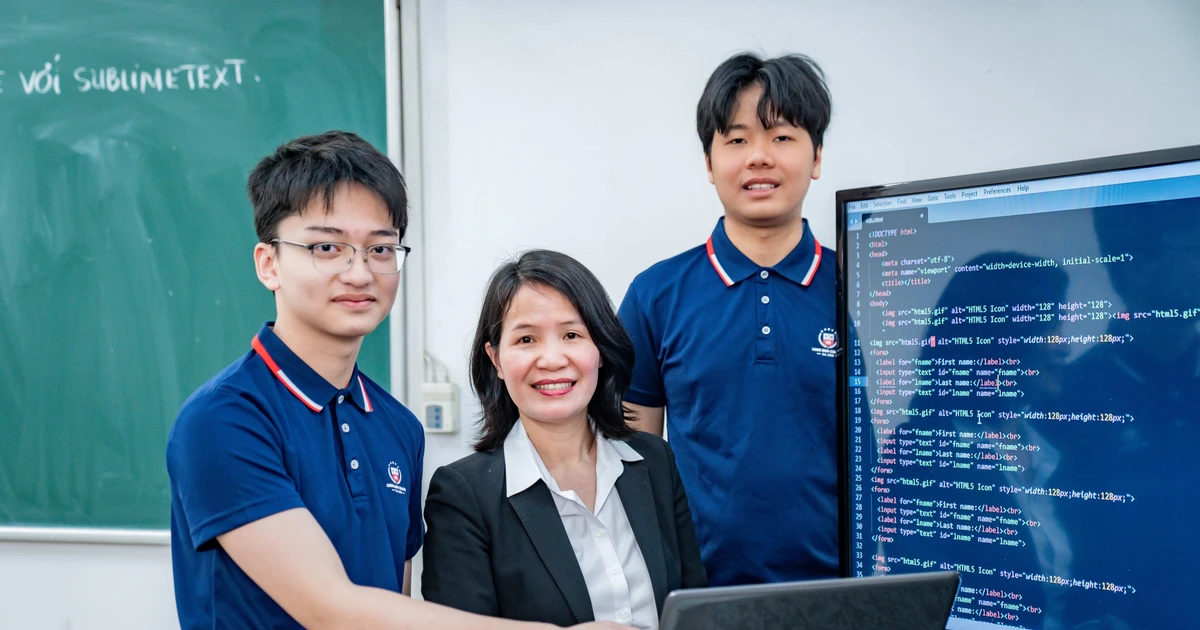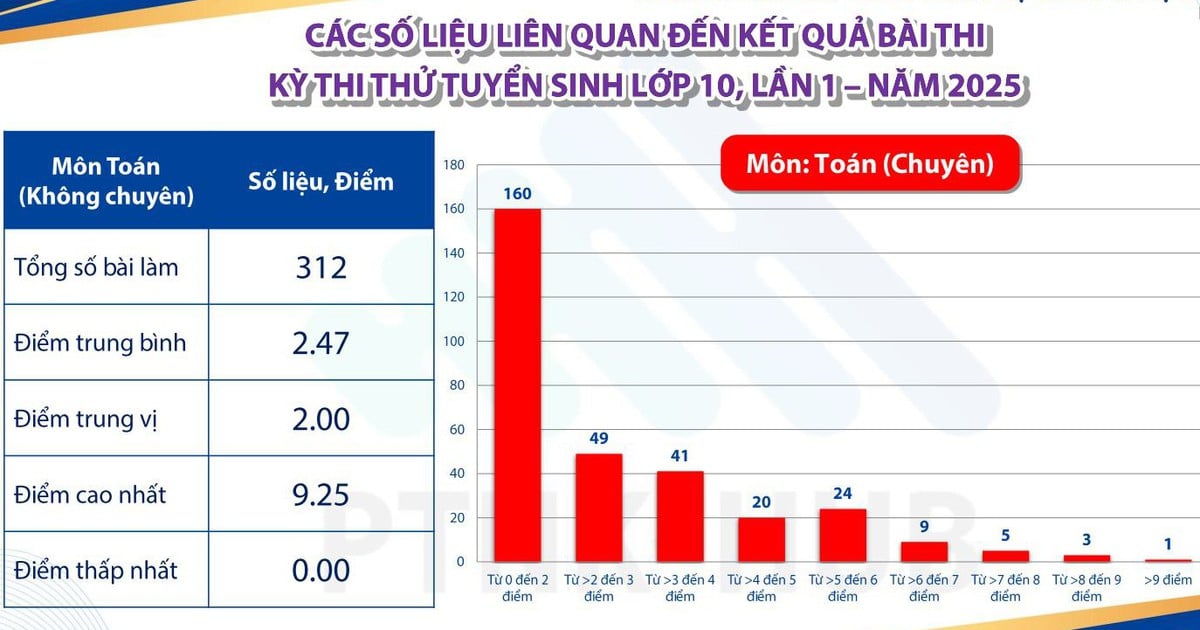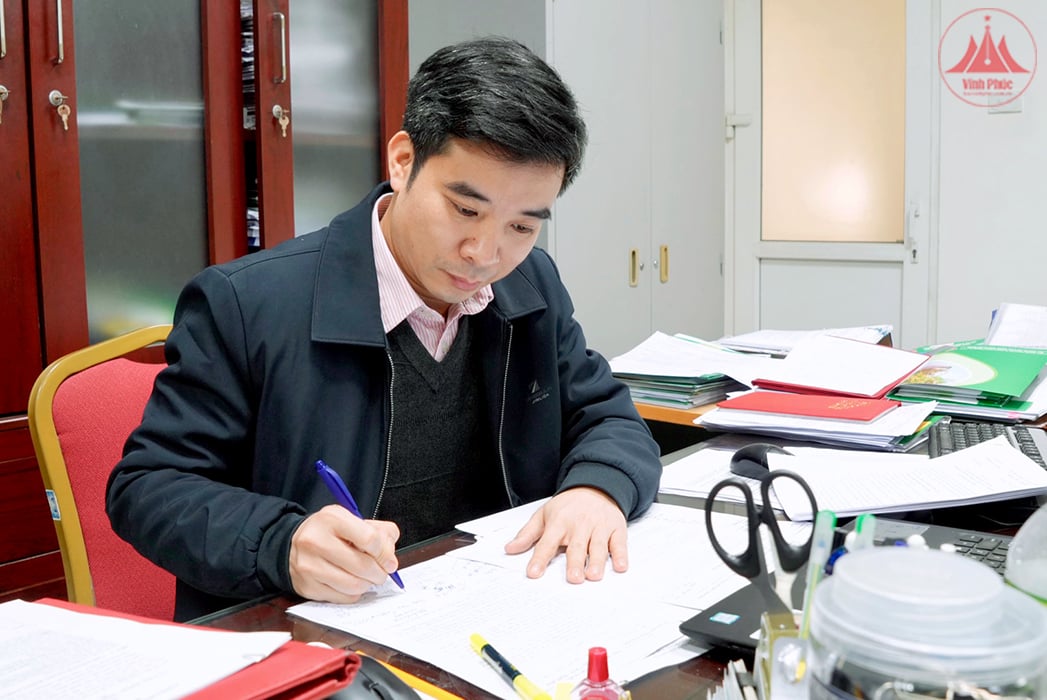The Director of the Department of Primary Education and many teachers believe that it is normal for more than 52,000 students to "not complete" first grade. This number is actually to avoid the situation of sitting in the wrong class.
Last school year, the country had more than 9.2 million primary school students, of which over 105,700 were assessed as "not completing" their classes, accounting for nearly 1.2% of the total. Grade 1 had the largest number of students with more than 52,400. The subjects that they did not complete were mainly Math (over 39,000) and Vietnamese (over 49,700).
The information was released in the Ministry of Education and Training's annual summary report on July 20-21. The report stated that "the new assessment method truly reflects the quality of education nationwide."
According to Mr. Thai Van Tai, Director of the Department of Primary Education, Ministry of Education and Training, there are two main reasons. First, students are assessed for all compulsory subjects. If they have not completed just one subject, they are counted in this number. In addition, among the "incomplete" students, more than 3,600 are disabled and over 16,000 are ethnic minorities. Many of them do not have access to the 5-year-old kindergarten program before entering grade 1.
"These are two types of students that need to be managed to help them not sit in the wrong class, especially first graders," said Mr. Tai.
Mr. Le Tien Thanh, former Director of the Department of Primary Education, said that in education, there are always cases of students having difficulties in learning. Therefore, the number of more than 52,400 children who have not completed first grade is normal.
"Compared to more than 1.7 million first graders, that number is not much," Mr. Thanh commented.
At the grassroots level, Mr. Dao Chi Manh, Principal of Hoi Hop B Primary School, Vinh Phuc, also said that the number of students at the school who have not completed first grade are those with cognitive problems. Last year, Mr. Manh's school had 164 first graders, about 3-5 of whom showed signs of hyperactivity but their parents may not have detected it. Those with records of students with disabilities will be assessed as disabled and considered for promotion to the next grade. Otherwise, they will be assessed as normal, so they may be held back.
Similarly, Ms. Nguyen Thi Ngoc, a first-grade teacher in Ha Nam, said that last year her homeroom class had two students who were held back. One was slow to speak and the other had a medical condition since birth. Because parents were hesitant to file disability records, the students were treated as normal students.
However, not all students who do not complete the program will be held back. Schools will plan to provide extra training for students during the summer, then test and evaluate.
"There will be some students who stay in the same grade, but not all of them," said Mr. Tai.
A representative of the Ministry of Education and Training confirmed that more than 52,400 students have not completed first grade not because of the implementation of the new program. The number was similar in previous years.
According to Mr. Tai, the new program creates favorable conditions for grade 1 when the Vietnamese subject is increased from 350 periods to 420 periods to prepare students as much as possible in terms of psychology and necessary abilities. Meanwhile, the average number of periods is still 25 periods/week as in the old program.
Mr. Manh also agrees with this opinion. He acknowledges that the biggest difficulty that teachers and students face when following the new program is adapting to changes in family, society, and even school. The new program has been in place for 3 years, but many teachers still have a tendency towards the old way of learning and teaching.
"We are teaching in the direction of developing character and capacity, but many families and schools attach great importance to scores. This is only a very small channel to evaluate students' capacity," said Mr. Manh.

First graders at Dinh Tien Hoang Primary School (District 1) on the first day of school in the 2022-2023 school year. Photo: Quynh Tran
The new general education program (2018) was first applied to grade 1 from the 2020-2021 school year. The program aims to develop students in 5 main qualities and 10 core competencies. Accordingly, the 5 main qualities include: Patriotism, compassion, diligence, honesty, responsibility. The 10 general competencies include: Autonomy and self-study, communication and cooperation, problem solving and creativity, language, calculation, science, technology, information technology, aesthetics, physical fitness.
According to Circular 27 on primary school student assessment, students are assessed on their level of meeting the requirements in 8 compulsory subjects (Vietnamese, Mathematics, Ethics, Nature and Society, Physical Education, Music, Fine Arts and Experiential Activities). This is done regularly by comments or by scores combined with teachers' comments.
The Ministry of Education and Training has repeatedly affirmed that assessment must be for the progress of students, focusing on motivating and encouraging their efforts in studying and training, helping students to maximize their abilities and capacities without causing pressure.
Dawn
Source link






![[Photo] General Secretary and President of China Xi Jinping arrives in Hanoi, starting a State visit to Vietnam](https://vstatic.vietnam.vn/vietnam/resource/IMAGE/2025/4/14/9e05688222c3405cb096618cb152bfd1)












![[Video] Hanoi sharply increases enrollment quota for specialized 10th graders in the 2025-2026 school year](https://vstatic.vietnam.vn/vietnam/resource/IMAGE/2025/4/14/67d64182825a4de0b03a3cd0a299fd8b)











![[Photo] Opening of the 44th session of the National Assembly Standing Committee](https://vstatic.vietnam.vn/vietnam/resource/IMAGE/2025/4/14/03a1687d4f584352a4b7aa6aa0f73792)
![[Photo] General Secretary To Lam chairs the third meeting to review the implementation of Resolution No. 18-NQ/TW](https://vstatic.vietnam.vn/vietnam/resource/IMAGE/2025/4/14/10f646e55e8e4f3b8c9ae2e35705481d)

































































Comment (0)